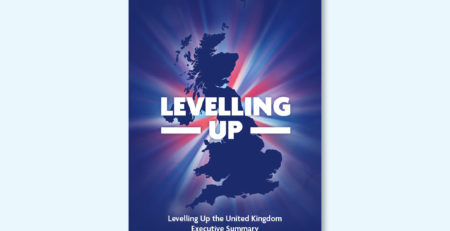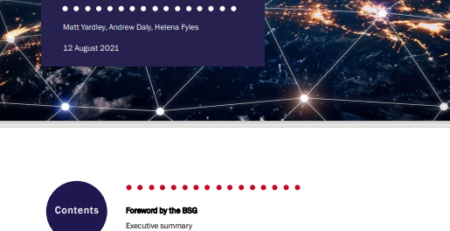Superfast broadband – is there a willingness to pay?
My recent posts have involved tying current events back to the findings of our report ‘A Framework for Evaluating the Value of Next Generation Broadband’. One of the challenges we highlighted then was creating the need for business models to evolve to support investment in next generation broadband.
Considerable uncertainty existed then as to consumers’ willingness to pay for next generation broadband, which in effect is a premium service. There was some initial evidence, particularly from the US, that we cited, but ultimately there was little certainty for investors to go on.
It is willingness to pay, however, which is crucial for the business models of investors. Increasing demand for bandwidth and bandwidth-hungry services could not form part of a business model for investment unless consumers are also willing to pay for that increase in bandwidth.
So, almost a year on, how has this picture developed? Here I will look at three areas for evidence: consumer spending, particularly on telecoms, in the UK; consumer appetites for premium services; and fibre demand emerging from other markets.
The most obvious place to start is the economy’s impact on consumer spending. The collapse of Lehman Brothers, the bailout of AIG and others, and the onset of a global recession has hit consumer confidence hard. Retailers have struggled as consumers have kept their money in their pockets.
For the broadband industry, this has perhaps been reflected in a slowdown in the growth of fixed-line broadband subscriptions. Quarterly net subscriber additions across the industry have broken the cycle of the last few years and are falling quarter on quarter.
However, this could equally be due to the market reaching a natural saturation point, heightened by the growth in popularity of mobile broadband (and increase of mobile-only homes) and the reduction in the number of people moving homes.
Perhaps a better indication of the sector’s performance is the level of ARPU (average revenue per user) companies are achieving. Spending on telecoms by UK consumers has been particularly robust, indicated by the results of the consumer divisions of BT, Sky, Virgin, Carphone, O2 and Orange.
– BT Retail reported an increase in ARPU in their most recent results.
– Carphone’s broadband ARPU grew during 2008 (although ARPU will be impacted over 2009 by the recent Tiscali acquisition).
– O2’s parent Telefonica reported that O2’s ARPU is up year on year.
– As did France Telecom, who reported ARPU growth for its UK subsidiary Orange.
– Virgin Media’s Q1 results this year showed a year on year quarterly ARPU increase, as did Sky’s most recent results
Although many of these results include products other than broadband, such as fixed-line and mobile telephony, and pay-tv servce, these results add weight to the argument that in times of tightening consumer spending, household spending on communications could be one of the last areas that households are willing to cut. Broadband could perhaps be becoming an essential digital utility for the majority of households.
So what of consumer spending on premium products? There was initial concern that premium products would be adversely affected. However, recent results from Pay-TV operators have been promising, with Sky in particular highlighting a consumer demand for premium products through the success of their HD push (they now have over 1m HD subscribers, up from 465k a year earlier).
HD is a useful comparator for next generation broadband, as consumers are paying a premium to access the same service, but at a higher quality. While consumer demand for premium products has not been maintained across the economy, it is interesting for this debate that it appears to have been sustained in the in-home entertainment market.
To add to this, Virgin have said that their 50Mb service is experiencing the take-up levels that they expected. However, it is likely we won’t see useful, mature results for this service for at least 12 months, so it is too soon to consider this as evidence of willingness to pay.
Internationally, the US provides perhaps the most appropriate market to examine for evidence of willingness to pay. It was the main market examined in our report because: information is readily available; investment has been underway for a number of years and is more mature than other deployments; no public funding is used; and no price regulation is in place, so pricing and take-up is likely to reflect genuine consumer willingness to pay.
AT&T, with their fibre-to-the-cabinet (FTTC) U-Verse service, has 1.3m fibre broadband subscribers, a take-up rate of 12% of homes passed by their network. They have reported a year-on-year quarterly increase in ARPU on their wireline business.
Verizon’s fibre-to-the-home (FTTH) service FiOS has 2.8m broadband subscribers, with a take-up rate of 27% of homes passed by the network. They have also posted a significant increase in wireline ARPU. Both have seen subscriber growth increase quarter on quarter over the last year, in spite of the recession.
These results do suggest that there is consumer willingness to pay for a fibre-based premium broadband service. However, caution must be used when reading across from these results, as broadband subscriptions are in part driven by the respective IPTV offerings of AT&T and Verizon. As such, it is difficult to separate out demand for high-speed broadband and demand for their video services.
There is also little sense of what broadband speed packages consumers are taking, although according to Verizon their most popular plan is their 20Mbps service (although this doesn’t necessarily mean that ADSL2+ would be sufficient, as with their FTTH service 20Mbps really means 20Mbps).
Following our report, BT announced an intention to deploy superfast broadband to 40% of homes, so they clearly see a business case for it. However, there is still some scepticism about whether a willingness to pay really exists for these speeds in the UK, particularly for FTTH – with BT CEO Ian Livingstone saying that “the economic case is not great” at the government’s recent Digital Britain Summit.
The evidence set out above is not conclusive, comes with caveats and ultimately is not direct evidence of the willingness of UK consumers to pay for superfast broadband. However, they are useful indicators, and a fuller picture will develop as this evidence continues to emerge.
We would be interested to hear from anyone who has views on emerging evidence of willingness to pay from other markets.
Peter Shearman, Policy Manager, BSG



